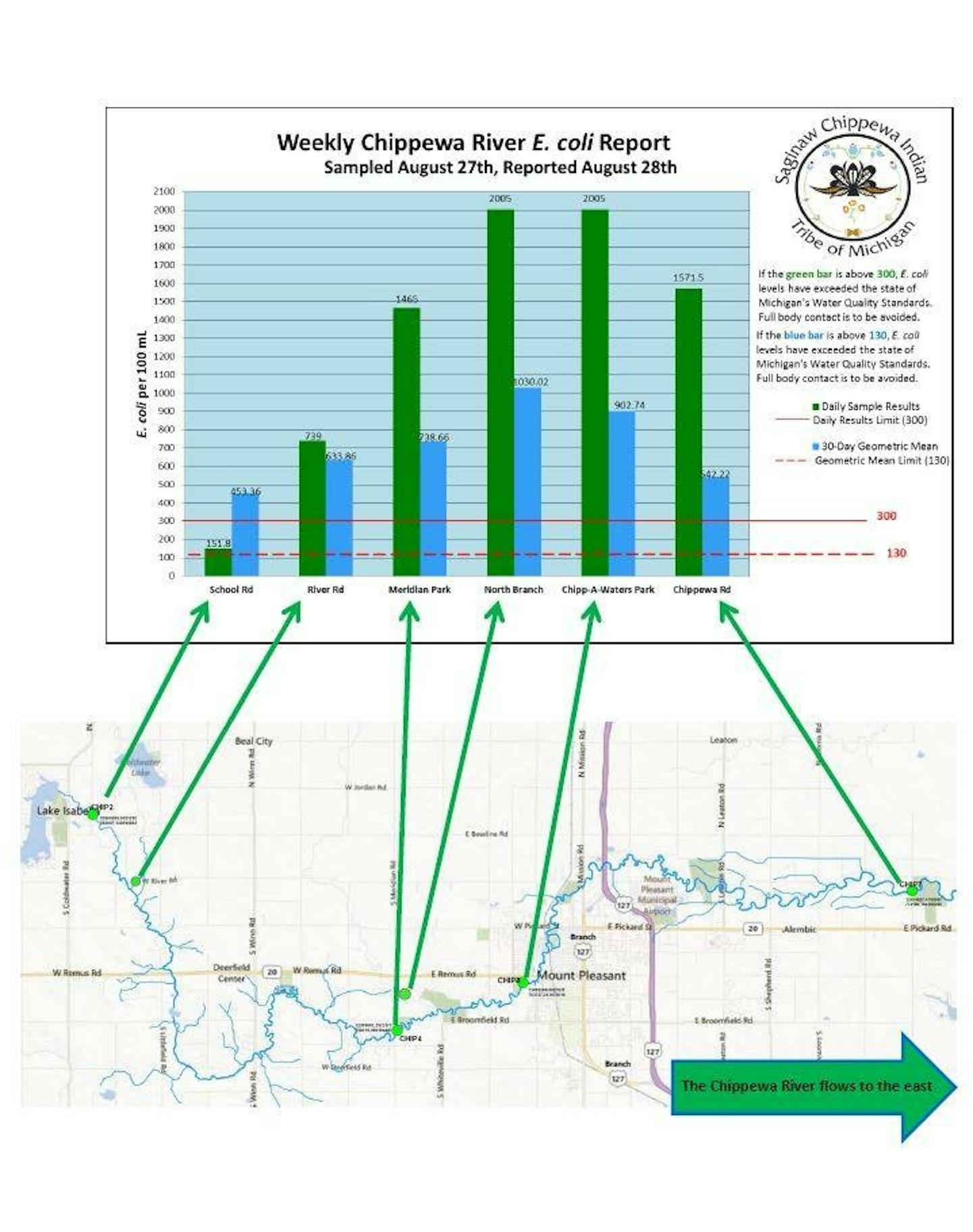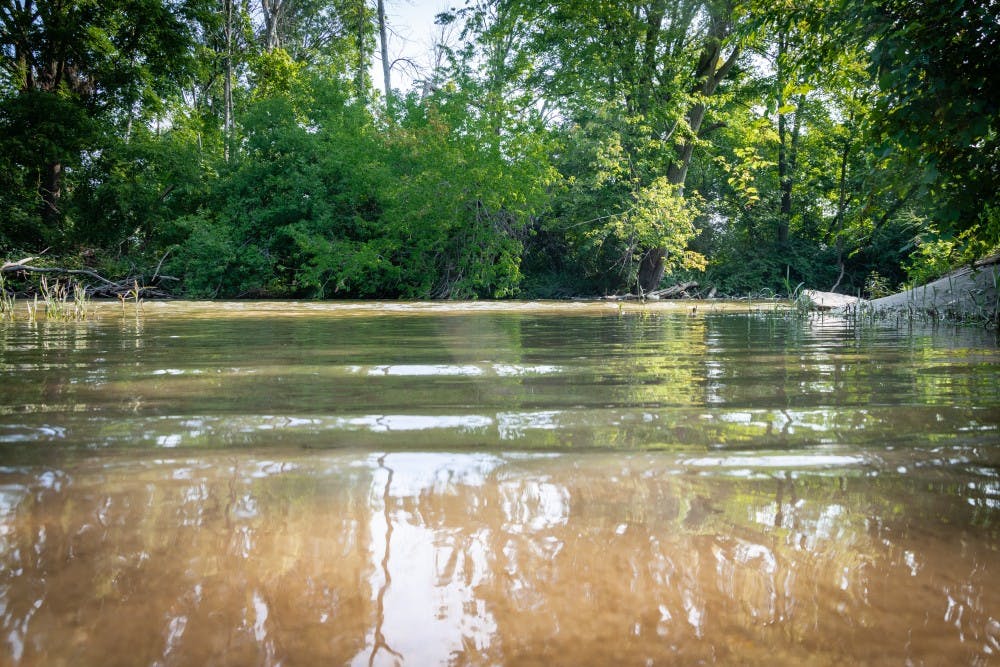Recent tests show high E. coli levels in Chippewa River
The Chippewa River shows an increased presence of E. coli due to recent rainfall, according to the Saginaw Chippewa Indian Tribe, and caution should be taken when coming in contact with the water.
The Tribe conducts tests once a week, at various locations along the Chippewa and Cold Water rivers, and calculates the 30-day mean, or average results, roughly every month.
The most recent tests done on Aug. 27, yielded high levels of E. coli in most of the sample spots. Most of the spots they tested were well over Michigan’s Water Quality Standards of daily E. coli levels, which is 300 colony forming units per 100 milliliters (CFU/100mL). Two of the spots tested over 2,000 CFU/100mL. The 30-day mean levels shouldn't exceed 130 CFU/100mL, according to the standards.
These recent high levels of E. coli are likely a result of runoff from recent rainfall, according to the Tribe's Facebook post that listed their results.
"We tend to see elevated levels of E. coli, or fecal chloroforms after storms," said Wendy Robertson, a Central Michigan University geology professor who specializes in hydrology, the study of the movement, distribution and quality of water. "Anything on the surface runs directly off the surface, into the stream. There isn't that intermediate step where it infiltrates the soil, and get's slowly filtered."
According to the Centers for Disease Control and Prevention, Escherichia coli, known as E. coli bacteria normally lives in the intestines of animals and humans and is mostly harmless and is actually an important part to the intestinal tract. However, some E. coli can cause illness, such as diarrhea, fever and mild to severe infections.
In total, six locations were sampled. These locations are:
- School Road bridge crossing
- Cold Water River bridge crossing
- Chipp-A-Waters Park
- Meridian Park
- Chippewa Road bridge crossing
- North Branch Chippewa River near Meridian Road
Of these locations, only the School Road bridge crossing was below the safe daily level at 151.8 CFU/100mL.
Below are their findings (the numbers on the left are the daily mean findings from Monday, the ones on the right are the 30-day means):
- School Rd bridge crossing: 151.8 CFU/100mL ; 453.36 CFU/100mL
- Cold Water River bridge crossing: 739 CFU/100mL ; 633.86 CFU/100mL
- Chipp-A-Waters Park: 2,005 CFU/100mL ; 238.66 CFU/100mL
- Meridian Park: 1,465 CFU/100mL ; 1030.02 CFU/100mL
- Chippewa Rd bridge crossing: 1,571.5 CFU/100mL ; 902.74 CFU/100mL
- North Branch Chippewa River near Meridian Rd: 2005 CFU/100mL ; 542.22 CFU/100mL
These results show a drastic increase from the previous month. The previous report, posted to Facebook on July 18, shows only two of the locations above the safe 30-day mean level: North Branch Chippewa River near Meridian Rd at 802.62 CFU/100mL, and Chipp-A-Waters Park at 270.66 CFU/100mL.
The North Branch flows into the main branch of the Chippewa River, near Chipp-A-Waters Park. According to the Tribe's water specialist, Kellie Henige, they have been testing high levels of E. coli at the North Branch location for a while.
"The North Branch has been dirtier for E. coli since the program started," Henige said.
The Michigan Department of Environmental Equality study conducted in August 2016 concluded that Beal City was draining raw sewage into a local stream. The stream is Wagner Drain, which flows into the North Branch of the Chippewa River.
Four of the samples taken at the time exceeded 1,000,000 CFU/100mL. According to Julia Miller, who helped conduct the study, MDEQ made Nottawa Township (where Beal City is located) sign an Administrative Consent Order, which gives the township actions that need to be taken to fix the problem.
When any of these levels are exceeded, it’s best to avoid any full body contact with the effected area, according to the Tribe. Robertson also recommends not exposing any open cuts to the water or ingesting. The full results can be viewed here.








